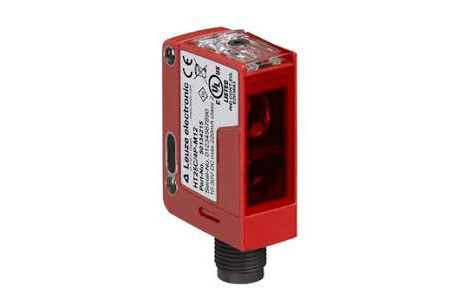Key Takeaway
The advantages of the photoelectric effect include its use in precise, contactless sensing. It can detect objects, distances, and changes in light levels, making it ideal for automation and industrial applications. It’s fast and reliable, with minimal wear and tear since there are no moving parts.
However, there are disadvantages of the photoelectric effect. Its performance can be affected by dust, fog, and reflections. It’s also limited in detecting transparent objects or working in very dark environments. External factors like temperature can influence the sensor’s accuracy, making it unsuitable for all conditions.
How the Photoelectric Effect Revolutionized Sensing Technology
Photoelectric effect by Albert Einstein paved the way for advancements in modern sensor technology, particularly in industrial automation. By converting light into electrical signals, photoelectric sensors can detect objects and environmental changes with remarkable speed and accuracy. This non-contact mechanism is highly effective in various industrial settings, allowing sensors to monitor production lines, ensure safety, and boost efficiency without the need for physical touch.
These sensors are versatile, capable of detecting objects across different distances and surfaces. From basic presence detection to more advanced distance measurement, the photoelectric effect has transformed how industries manage automation tasks. The key innovation was using light for processes that once relied on mechanical or magnetic methods, enabling more precise and delicate operations in manufacturing environments.

Key Advantages of the Photoelectric Effect in Modern Applications
One of the key advantages of the photoelectric effect is its ability to detect objects from a distance without physical contact. This is particularly valuable in industries where touch-based detection could be harmful or impractical, such as when handling delicate or hazardous materials. For example, in industries dealing with high-temperature equipment or fragile glass, the non-contact nature of photoelectric sensors ensures safer and more efficient monitoring. This flexibility allows the sensor to function seamlessly across a variety of environments and object types, including metals, plastics, and even transparent materials like glass.
Another major benefit is the high speed of these sensors. In fast-paced industries, such as packaging and assembly lines, quick detection is essential for maintaining workflow efficiency. The fast response time of photoelectric sensors ensures immediate feedback, reducing delays and improving accuracy. Additionally, their customizable nature means that these sensors can be tailored to specific needs, whether for long-range detection or identifying small objects, making them a versatile tool across industries.
Limitations of the Photoelectric Effect in Certain Environments
Despite the advantages, the photoelectric effect has its limitations. One of the most common issues is its vulnerability to environmental conditions. In dusty, dirty, or extremely bright environments, sensors may struggle to detect objects accurately. For instance, in manufacturing plants with heavy dust, debris can obstruct the sensor’s beam, leading to false detections or missed signals. This could result in production delays or even safety risks if not addressed properly.
Moreover, certain materials can interfere with the effectiveness of photoelectric sensors. Reflective surfaces, such as mirrors or shiny metals, can cause the sensor to misread or fail entirely. Likewise, very dark or light-absorbing objects may not be detected accurately. These limitations highlight that while photoelectric sensors are highly useful, they need careful selection and placement to function correctly in challenging environments.
How External Factors Impact the Performance of Photoelectric Sensors
External factors such as lighting, temperature, and contaminants can have a direct impact on the performance of photoelectric sensors. For example, bright lighting, especially from direct sunlight, can flood the sensor with unwanted light, leading to false triggers. In a factory with varying lighting conditions, this might lead to unwanted interruptions or incorrect readings, potentially slowing down production or causing errors.
Additionally, environmental temperature can also affect sensor performance. If the factory temperature fluctuates drastically between hot and cold, the sensor may not function within its optimal range. Dust, dirt, and smoke are other common issues that can scatter the sensor’s light beam, reducing its accuracy. Understanding these factors helps engineers choose the right sensor for the environment, ensuring smooth operations without unnecessary downtimes.
Best Use Cases for Photoelectric Sensors Across Industries
Photoelectric sensors are widely used across industries for their ability to detect without physical contact. In manufacturing, they’re perfect for applications like counting, positioning, and object detection on conveyor belts. For instance, they can monitor fragile electronics without risking damage through physical touch. Their versatility and precision make them a staple in many factories worldwide.
In the packaging industry, photoelectric sensors play a critical role in quality control. They ensure that products are aligned correctly before sealing, helping to reduce packaging errors. In safety applications, these sensors are crucial for machine guarding systems. If a person or object is detected in a dangerous area, the sensor triggers an immediate stop, ensuring worker safety. Their adaptability across these sectors showcases the value of photoelectric sensors in improving efficiency and safety.
Conclusion
The photoelectric effect in industrial automation offers key advantages, such as detecting objects at various distances without contact and at high speeds. However, factors like lighting and environmental conditions can affect performance, making sensor selection crucial. When used in the right context, photoelectric sensors provide reliable, fast, and accurate detection, contributing to smoother and safer industrial operations. As technology improves, these sensors are expected to offer even greater precision and reliability across diverse environments, helping engineers optimize their systems effectively.
